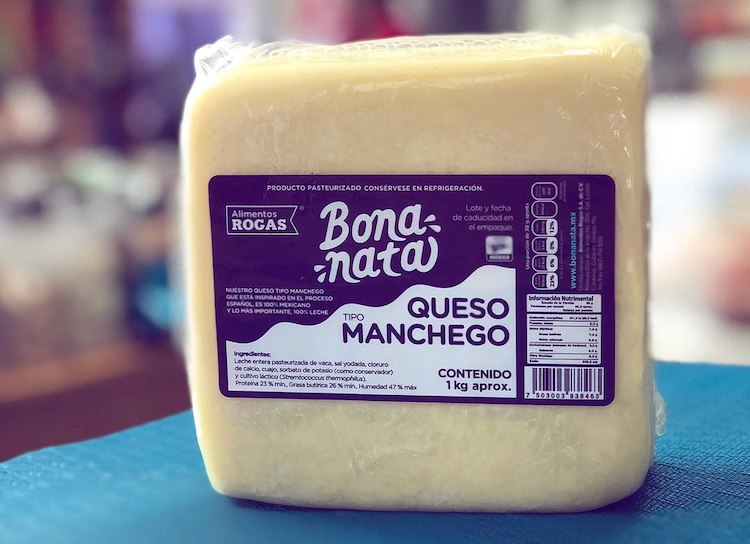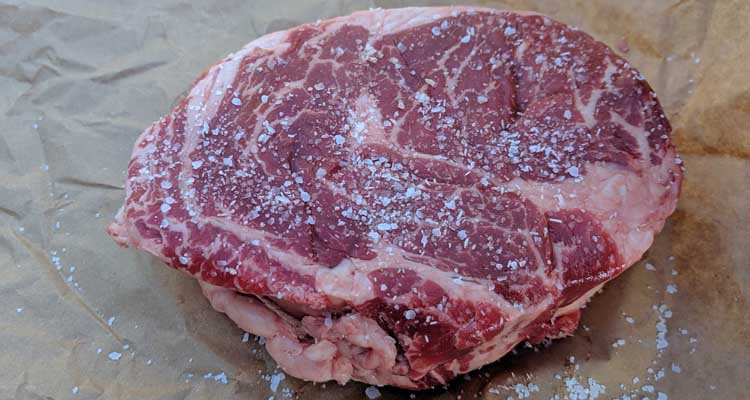What Is the Best Cheese for Pizza?

For many pizza lovers, cheese is a critical part of the pie. Whether you like it thick and stringy or crisply toasted, cheese is the final piece in the comfort food puzzle.
There is also a vast range of fabulous fromage to try, from tart goat’s cheese to rich Ricotta, and today we’ll be going through the best cheese choices for your pie and what each of them brings to the table.
What is the best cheese for pizza?
Obviously, there’s no single right answer to this question. What cheese you like on your pie is entirely down to your own tastes.
However, certain types of cheese respond better to certain cooking methods. What works on a traditional wood-fired pizza cooked at an extremely high heat, might not work in a Chicago-style pizza pie. The specific flavor profiles of specific cheeses mean they work better with some certain traditional pizza toppings than with others.
Instead of insisting that a particular cheese is the best, we’ll be looking at a range of cheeses and why they deserve a place on your pie.
Mozzarella
There is a reason that Mozarella is the traditional ‘go-to’ when it comes to a cheese pizza topping. Made using a technique called pasta filata, which roughly translates to “stretched curd,” Mozzarella curd is kneaded in hot water during its manufacture. This kneading gives it a soft, stretchy texture that translates into a lot of delicate cheese strings when cooked.

If there can be any complaints leveled at Mozarella, the main one would be that it is not strongly flavored. While this might seem like an issue, it can also be interpreted as a benefit.
Mozzarella provides that stringy gooey cheese mouth-feel we all crave, but its mild creamy flavor leaves room for the other stars of the pizza show, such as fresh basil, garlic, oregano, and fresh tomatoes, to really shine.
Provolone
If you love the texture and consistency of Mozzarella, but you’ve always wanted your cheese topping to have a little more bite, then Provolone could be exactly what you’re looking for.

Another cheese manufactured using the pasta filata method, Provolone will give you that same melted puddles of stringy cheese that Mozarella works so well for, but with the added flavor that comes from extra aging.
The more aged the Provolone you buy, the stronger that flavor is going to be. You can also opt for smoked Provolone for a more intense smokey flavor for your pizza. If you’re feeling daring, you could always smoke the cheese yourself, it’s not as difficult as it sounds.
While Provolone does have a more robust flavor than Mozzarella, it’s still mild enough to allow the flavors of a good tomato sauce and fresh herbs to shine through.
Mature Cheddar
While most people don’t associate Cheddar with pizza making, it is surprisingly common to find it mixed in with the more common Mozzarella and Provolone to add a little bite and a deeper orange color to pizza toppings.

Originating from the English village of Cheddar in Somerset, Cheddar is a semi-hard cheese with a distinct sharp flavor. Unmatured Cheddar often has creamy notes which transform into intense, sharp flavors as the cheese matures.
Because of its low elasticity and moisture content, Cheddar is a great cheese to use if you like your pizza to have crisp little pockets of toasted cheese around its crust. It also makes a great alternative to Mozzarella if you want to avoid the soggy center that comes with using high moisture cheeses.
Parmesan
Arguably the king of the hard Italian cheeses, Parmesan has a distinct and unique umami flavor that makes a great addition to any pizza. Parmigiano-Reggiano gets its name from the fact that it originates from the provinces of Parma and Reggio Emilia in Italy.

A hard cow’s milk cheese, Parmesan is aged in giant, iconic wheels for a minimum of 12-months and up to 36-months for the ultra-mature Stravecchio.
Unlike most other cheeses on this list, Parmesan is more of a garnish than an ingredient. Parmesan’s powder-fine texture and ultra low moisture content does not play well with sustained heat. Instead of adding it during the cooking process, Parmesan should be added after cooking to avoid it burning.
Gruyere
An intensely flavored cheese that melts into a delicious savory puddle, Gruyere is a hard yellow Swiss cheese that is the traditional ingredient in a Croque Monsieur.

Gruyere has a rich nutty flavor that stands up well to other strong flavors, making it an excellent choice for combining with toppings like sausage, pepperoni, or other cured meats.
Because of its relatively low moisture content, Gruyere is another great alternative to Mozzarella if you don’t want the center of your pie to turn into a soup.
Ricotta
Ricotta is traditionally used as the cheese base for white sauce pizzas. A soft whey cheese from Italy, Ricotta is usually made from the byproducts of other cheeses, using the milk whey left over from cow, sheep, goat, or Italian water buffalo milk. The name Ricotta even translates as “recooked.”

Because of its mild and creamy flavor, Ricotta is commonly combined with other cheese on a pizza. Ricotta is usually part of the base sauce of a white pizza topped off with the much more robust flavors of Parmesan for a fantastic blend of umami taste and rich creaminess.
Goat’s cheese
The terms goat’s cheese covers a vast range of cheese types, from hard cheeses similar to Parmesan to soft whey cheeses like Ricotta.

The most common type of goat’s cheese is a semi-soft fresh cheese, such as the Eastern Mediterranean Labneh or the French Crottin de Chavignol.
Goat’s cheese has a distinct earthy and slightly tart taste that combines exceptionally well with sweet and vinegary flavors, such as caramelized onions or black olives. Goat cheese won’t melt when exposed to heat, but it will soften.
Manchego
A hard sheep’s milk cheese originally made in Spain’s La Mancha region, Manchego gets its name from the local Manchega breed of sheep.

Manchego is a semi-hard cheese that is aged between 60 days and two years. It has a firm but buttery-smooth texture and a piquant nutty flavor that keeps some of the taste of the sheep’s milk it’s made from.
Much like Parmesan, Manchego doesn’t benefit from being cooked. It doesn’t melt well, and cooking Manchego destroys some of its delicate flavors. Manchego works best when sliced into thin curls and scattered over a freshly cooked pizza.
Understandably, Manchego pairs well with Spanish flavors like chorizo, olives, and tomatoes.
Blue cheese
A blue cheese is any cheese that contains the distinctive blue veins of Penicillium mold through it.

Traditionally, blue cheeses are semi-soft, such as the French Bleu de Gex, and have a very distinct and powerfully pungent smell and taste coupled with a creamy texture.
Sharp and salty, blue cheese world very well with strong flavors and spicy foods. A blue cheese pizza often contains ingredients that won’t be overpowered by its distinct taste, like spicy ground beef, Prosciutto, balsamic vinegar, and caramelized onions.
Choosing the best cheese for your pizza: what you need to know
Getting the right cheese for your pizza generally depends on your specific tastes and the other ingredients you plan to use.
Blue and goat’s cheeses have strong flavor profiles that not everyone is a fan of, and some cheeses don’t respond well to cooking. For example, Manchego and Parmesan should be added at the end of cooking to get the best from them.
If you’re using pizza sauce that is full of fresh tomato and basil flavors, you’ll want to combine that with a milder cheese, so those flavors aren’t overwhelmed. If you used a sweeter base, like a BBQ sauce or a balsamic drizzle, you’d want to use a more robust cheese, like blue cheese or Gruyere, so it doesn’t get lost.
There’s also no reason you can’t combine cheeses to get what you want from your pizza. You might choose Mozzarella or Provolone for that traditionally stringy pull-apart and combine it with an extra mature Cheddar for more flavor and less moisture. It’s your pizza, have it your way.
Is Mozzarella the most popular cheese for pizza?
According to a study from the Journal of Food Science, titled “Qualification of Pizza Baking Properties of Difference Cheese and Their Correlation with Cheese Functionality.” Mozzarella is the most commonly used cheese for pizza because of its stretchy texture, the fact that it bubbles when heated, and low oil content that means it browns nicely.
These benefits make Mozzarella a great addition to any pizza, but just because it’s popular doesn’t mean it’s a requirement. There are a range of Mozzarella alternatives for you to use if it just isn’t your thing.
What’s the difference between high and low-moisture Mozzarella?
One of the most common complaints about Mozzarella is that it can turn the center of pizza into a cheese and sauce soup, ruining your perfect Neapolitan base. There is, however, a solution to this problem.
Fresh Mozzarella has a high water content and is usually stored in water to keep it fresh. However, Mozzarella can be aged for a more extended period of time and then dried out to create low-moisture Mozzarella.
Low-moisture Mozzarella has a slightly stronger flavor, similar to Provolone, but keeps the browning and stretching qualities that make Mozzarella such a popular pizza ingredient.
Wrapping it up
For most people, cheese is a pillar of the pizza experience, with different cheese compliments and completing a whole range of other pizza toppings. There isn’t one specific cheese that needs to be on your pizza, even if Mozzarella is the most popular, different cheeses work well with other ingredients.
Finding the right cheese, or mixture of cheese, for you perfect pizza might take some trial and error, but we have a feeling that it might be the tastiest investigation ever conducted!
Do you have the perfect cheese mix for any pizza, or maybe there’s a cheese we missed you think belongs on this list? We’d love to hear about it in the comments section below.








